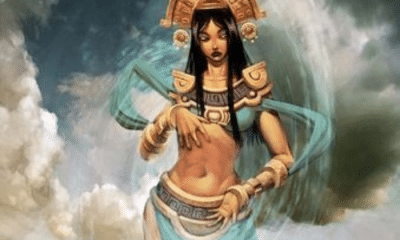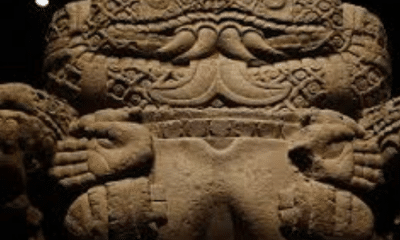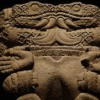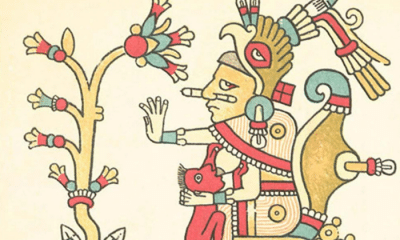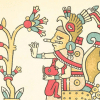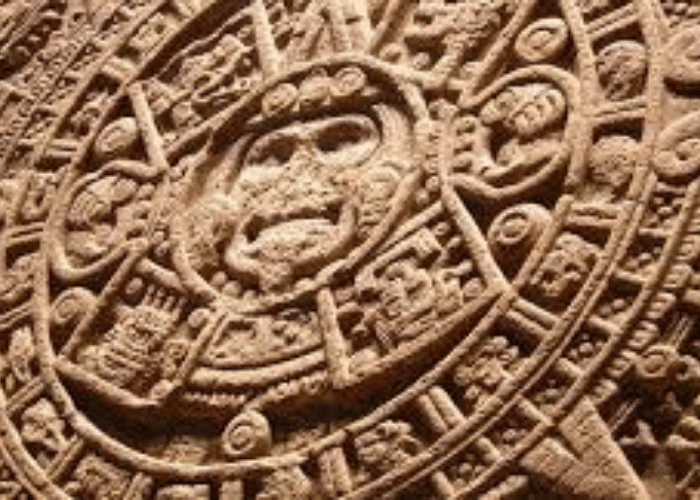
Aztec
Tonatiuh: An Aztec God of the Sun
Tonatiuh: An Aztec God of the Sun
The Aztecs had many sun gods. Keep reading to learn about Tonatiuh, who many believed was the sun that traveled across the sky in their own time.
The people of Mexico and Central America believed that they lived under the light of the fifth sun god. They did not, however, always agree on exactly who that god was.
One of the most widespread beliefs was that the sun was a red-skinned deity named Tonatiuh. He wore a crown of eagle feathers to fly through the sky each day and carried a golden disk.
Tonatiuh was not an entirely benevolent god, however. He was difficult to please which, in the Aztec world, meant that people needed to be sacrificed to him to ensure that he returned to the sky each day.
According to contemporary accounts, the people of the region once have the name Tonatiuh to a living person, as well. While the Spanish conquistadors may have taken the epithet as an honorific, the reality was probably much less glorious than they imagined.
Tonatiuh the Fifth Sun
In the beliefs of the Aztec people, the world had been created five times.
Whenever the world was remade, the gods chose one of their members to be the sun. The world had gone through four sun gods that had each destroyed the world they shone down on.
The third sun, for example, had been a rain goddess. When she was insulted she wept so intensely that the world was destroyed by the resulting flood.
Another sun god had sent a rain of fire in anger. The second had swept everything off the earth with a strong wind while the first had sent jaguars to devour all living things.
According to the Aztecs, the world was in its fifth era. The current sun was a god known as Tonatiuh.
Tonatiuh had been reluctant to take the role, however. Three gods had met to perform a sacrifice that would compel Tonatiuh to take his place in the sky.
Nanahuatl and Teucciztecatl had both sacrificed themselves willingly, but Tonatih was still unswayed. Finally, the dog god Xolotl sacrificed himself and Tonatiuh was moved enough to rise as the sun.
According to some legends, Teucciztecatl was turned into the moon because he had hesitated before the sacrifice. The moon’s craters are visible because Teucciztecatl had a pockmarked and scarred face.
In one recorded version of the story, Xolotl did not sacrifice himself willingly. When the other deaths did not suffice, Quetzalcoatl struck down his brother as the final offering instead.
Because he had required sacrifices to take his position, the Aztecs believed that more sacrifices were necessary to keep him in the sky.
Tonatiuh was associated with eagles because of his movement across the sky. The Aztecs believed that he used eagle feathers to fly across the sky each day and rested below the horizon at night.
The eagle was also a reference to the sacrifices made to appease him. The eagle’s talons symbolized the lifting of a person’s soul toward the sun.
Not all Aztec people identified Tonatiuh as the sun, however.
The people of Tenochtitlan believed that their own patron god Huitzilopochtli was the sun god. In their version of the myth, Huitzilopochtli’s sister was the goddess of the moon and she and their brothers, the stars, constantly chased the sun across the sky in jealousy.
Others said that Nanahuatl, who was sometimes known by the name Nanauatzin, was the current god of the sun. Because he was ill, he immolated himself as a sacrifice to become the sun god.
Some modern scholars bridge this gap by saying that Nanahuatl had been the first to sacrifice himself so he was reincarnated as Tonatiuh. His name, which meant “Full of Sores,” was changed to one that meant “He Who Makes the Day” or “He Who Goes Foth Shining” to reflect his new position.
The varied stories were not only the result of local variation. They also appeared because belief in the Five Suns myth spanned several hundred years.
As power shifted over this great span of time, efforts were made to recenter the mythology to coincide with the most prominent state. During the Spanish conquest this was Tenochtitlan, so their myths are the most well-recorded.
Away from these power centers, however, beliefs were slowed to change. While the first Europeans to arrive at Tenochtitlan heard that Huitzilopochtli was the sun god, those who moved through other parts of Mexico and Central America heard about Tonatiuh.
My Modern Interpretation
The sun god was one of the most important in the Aztec world, so each city and state wanted a personal connection to the bringing of light. The identification of many different gods as the fifth sun is almost certainly an attempt to localize the sun cult.
Tonatiuh’s cult was centered on Teotihuacan. Another name for the city may have been Teohaucan, which meant “City of the Sun.”
The people of Teotihuacan believed that Tonatiuh’s ascension had occurred in their own city. They claimed a special relationship to the sun because of this.
While Teotihuacan and its population reached their zenith several hundred years before the arrival of the Spanish, their beliefs were still influential in the later capital of Tenochtitlan, which was just forty miles away. Their influence had once spread as far as Guatemala, so many of their beliefs persisted throughout the region.
When the Spanish conquistadors arrived, they and the people who traveled with them made notes on the local culture as they understood it. In more than one case, they claimed that the native Aztecs believed the Europeans to be reborn gods.
The most infamous example of this is the supposed identification of Hernan Cortes with Quetzalcoatl. While this story is almost certainly based on a lack of understanding, it has remained popular for the past five hundred years.
Elsewhere in the new world, Europeans recorded that another Spanish conqueror was believed to be an incarnation of the sun god.
Pedro de Alvarado was a companion of Cortes who later became the first governor of what is now Guatemala. One of their soldiers claimed that the Aztecs called Alvarado by the name Tonatiuh.
According to the Spanish writer, this was because the conquistador was “of very perfect grade in both face and person” The reasons, however, were likely much different.
The first was, as the Europeans believed, due to Alvarez’s appearance. This wasn’t, however, because of perceived perfection.
Tonatiuh was depicted with bright red skin. Alvarez’s red beard may have reminded the local people of their own brightly-colored deity.
In personality as well, Alvarez’s association with Tonatiuh may have been less positive than he would have liked to believe.
The sun god required constant sacrifice and was known to be a harsh, demanding, and sometimes cruel deity. In the hot and often dry climate of Mexico, the sun could be a source of death as well as life.
Even in the context of the Spanish conquest, Alvarez was known for his cruelty. Even his own countrymen remarked that he preferred to be feared rather than loved, whether by natives or Spaniards.
Alvarez was certainly not the only conquistador to commit atrocities against the native populations, but he earned a reputation for being particularly ruthless.
In their own cultural context, the Europeans viewed the sun as a radiant, glorious source of light and warmth. They would have viewed comparisons to the sun as though they were being compared to a classical god like Apollo.
The Aztecs, though, were likely not being as reverent in calling Alvarez by the name of their sun god. Tonatiuh was an unkind and merciless deity who required that many people be brutally killed to appease him.
Eventually, Alvarez would meet with a fate that proved he was not divine. While marching to help quell a native revolt Alvarez was crushed by a spooked horse and killed.
In Summary
Tonatiuh was one of the sun gods recognized by some Aztec people.
The Mesoamericans of the time believed that they were living in the era of the fifth sun. The previous suns had each destroyed the world.
Tonatiuh’s cult was widespread throughout Mexico and Guatemala, although the major city of Tenochtitlan generally recognized another god as the current sun.
His worshipers believed that he had only been compelled to take the position of sun god after three other gods had sacrificed themselves in his honor. Because he was so reluctant, constant human sacrifices were necessary to keep him from abandoning his place.
When the Spanish conquistadors arrived in the 16th century one of them, Pedro de Alvarez, was given the name Tonatiuh by the local people. While the Spaniards believed that this was because of his rank and attractiveness, the Aztecs likely had other reasons for comparing them.
Alvarez had a red beard which may have reminded people of their red-skinned god. More notably, he and Tonatiuh shared a reputation for cruelty, greed, and aggression.


